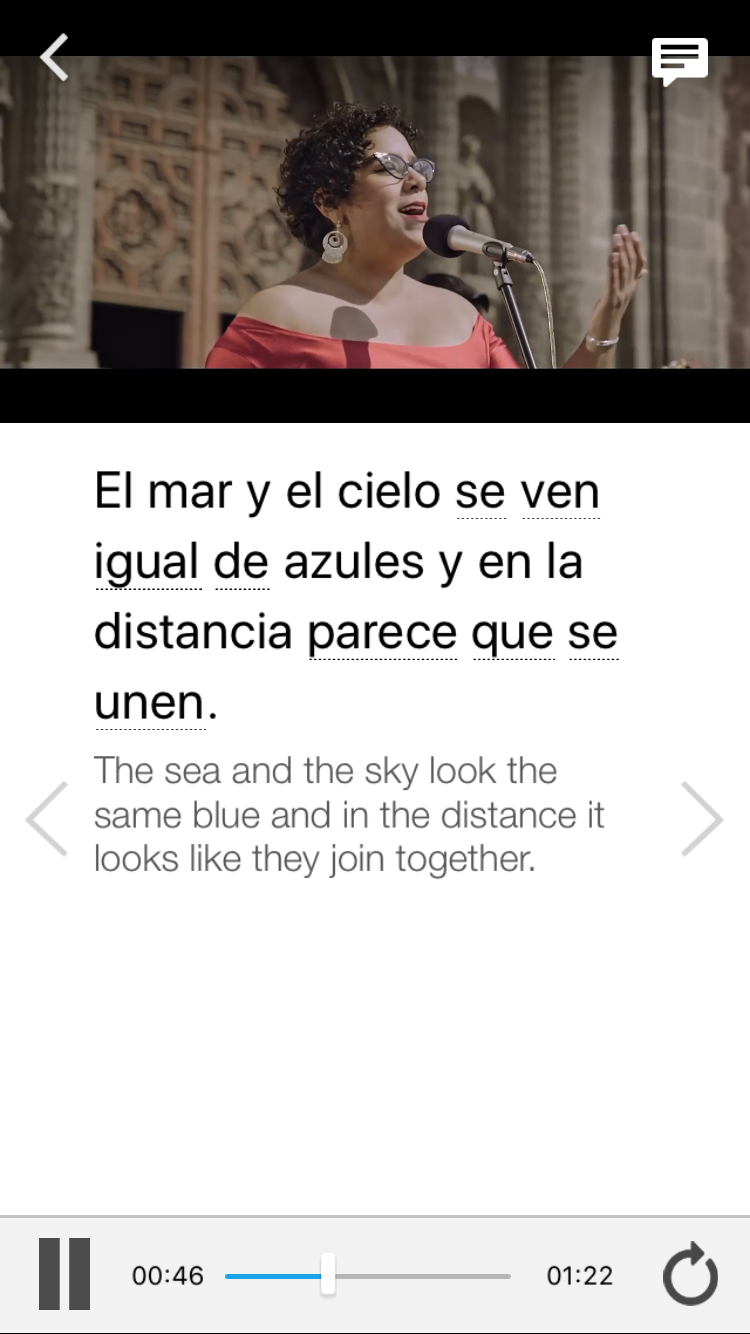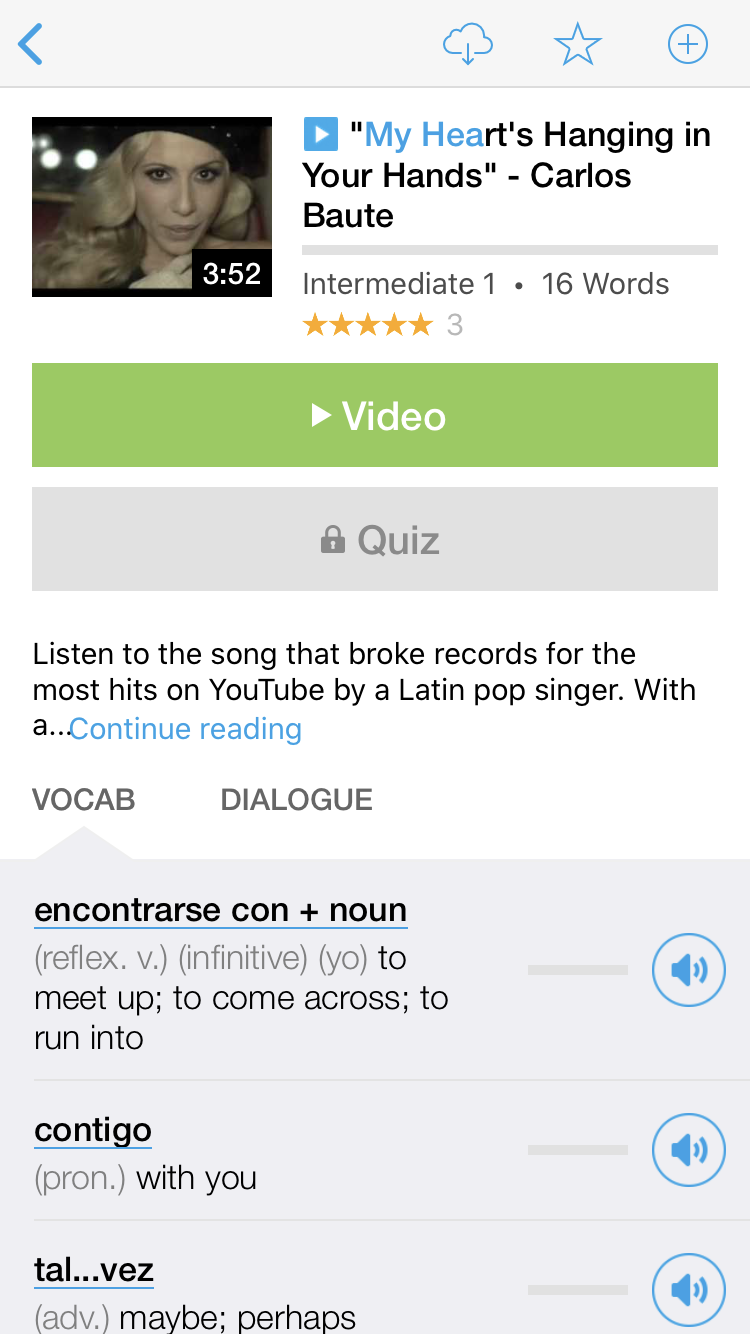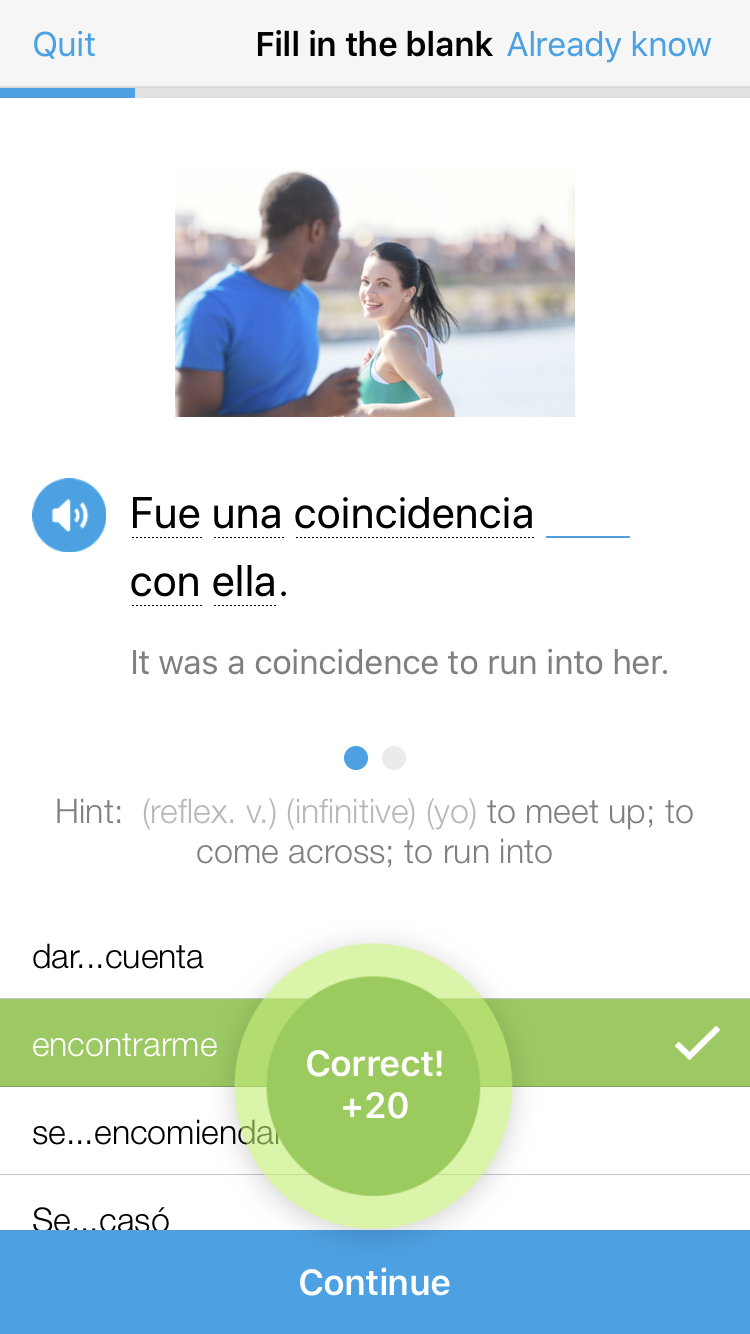
The Instituto de Verbología Hispánica
(Hispanic Verbology Institute) has a whopping 100,700 different Spanish verbs in its online database.
That’s a lot of verbs!
On the other hand, the Diccionario de la Real Academia Española
(Royal Spanish Academy’s Dictionary) only has around 1,000 purely pronominal verbs.
The difference between the two figures is mind-blowing, but the good news is that you don’t have to spend centuries learning pronominal verbs.
So what is a Spanish pronominal verb, anyway? And how does it fit into your Español
studies?
Read on to learn all about them!
Contents
Download:
This blog post is available as a convenient and portable PDF that you
can take anywhere.
Click here to get a copy. (Download)
What Is a Spanish Pronominal Verb?
Simply put, a pronominal verb is a verb that requires a reflexive pronoun. In English, these pronouns consist of those that end in -self or -selves like myself, yourself, itself, ourselves, yourselves and so on.
You’ve probably already seen some Spanish verbs ending in -se. These are pronominal verbs! Like in English, Spanish pronominal verbs describe an action that we either do to ourselves or that affects us directly.
Here are some examples of Spanish pronominal verbs in the infinitive:
Unlike English verbs, Spanish verbs will usually be either pronominal or not. This means, for example, that the verb vestirse is a pronominal verb and every time a subject dresses themselves, you’ll have a pronominal conjugated verb in Spanish, no matter the context:
Acabo de vestirme.
(I just got dressed.)
¡Mamá, me he vestido yo solo!
(Mum, I got dressed myself!)
Pronominal verbs are much more common in Spanish than in English, and unfortunately, there’s no one-size-fits-all rule of thumb for them.
Some of them will make sense (like vestirse and afeitarse), while others are pronominal just because (like acabarse
or “to run out of” and llamarse
or “to be called”). Imagine saying something like “I just ran myself out of milk” in English!
Before we get into the nitty-gritty of Spanish pronominal verbs, I’m going to run you through the reflexive pronouns that often come with these verbs:
| Spanish Reflexive Pronouns | English Translation |
|---|---|
| me |
myself |
| te |
yourself |
| se |
himself, herself, itself |
| nos |
ourselves |
| os |
yourselves |
| se |
themselves |
Later, I’ll explain in more detail how to use these pronouns. Just keep them handy for now and pay careful attention to how they’re used relative to pronominal verbs in Spanish sentences.
6 Types of Spanish Pronominal Verbs
In reality, there are several types of pronominal verbs in Spanish. Luckily, you don’t need to know all of them to become fluent in the language. Even native speakers don’t use them all, and if they do, they don’t do it knowingly!
That said, it is possible to boil down the most common pronominal Spanish verbs into six main categories.
1. Purely Pronominal Verbs
Let’s start with an easy one. Purely pronominal verbs, known in Spanish as verbos pronominales puros
, are a small group of verbs that only exist in the pronominal form (hence their name). In other words, they cannot exist without a reflexive pronoun.
Here are a few examples:
2. Reflexive Verbs
This second group is probably the biggest one and arguably the first one that comes to mind when people think about Spanish pronominal verbs.
However, you should remember that even though all reflexive verbs ( verbos reflexivos
) are pronominal, not all pronominal verbs are reflexive!
Remember that reflexive verbs indicate that the subject of the sentence is performing the action on themselves. Because of that, the reflexive pronoun has to agree with the subject:
As you can see, most grooming activities are reflexive in Spanish. Don’t worry—you’ll get used to it.
But again, pronominal verbs in Spanish aren’t always reflexive. In sentences like Voy a bañar a mi hijo
(I am going to bathe my son) and Dile a papá que te vista
(Tell Dad to get you dressed), the words used to describe grooming activities become normal verbs, since the actions are performed on a different person.
False Reflexive Verbs
Just to complicate things, there are verbs that look like reflexive verbs but aren’t.
English has phrases like “to have something done” to say that someone does something for another person (like “having your nails done”), but Spanish doesn’t.
In other words, just because a verb uses a pronoun that looks reflexive doesn’t automatically mean that the verb is reflexive.
Take this sentence, for example:
Tú deberías cortarte el pelo ya.
(You should get your hair cut already.)
Notice how the subject of the above sentence agrees with the pronoun, which may make you think this person is going to cut his own hair. However, it’s more likely he’s going to the hairdresser to have it cut.
Here are two more examples:
Tengo que hacerme las uñas.
(I have to get my nails done.)
Nos hemos hecho una liposucción.
(We have had a liposuction done.)
3. Reciprocal Verbs
Reciprocal verbs are similar to reflexive verbs, except instead of someone doing an action to themselves, we have two people doing the same action to each other. These verbs are called verbos recíprocos
(reciprocal verbs).
Here are a few examples:
Since the actions always happen between two or more people, only the plural forms are used.
4. Ethical Datives or Datives of Interest
Ethical datives ( dativos éticos
) or datives of interest ( dativos de interés
) are object pronouns added to verbs to indicate that the subject of the sentence is somehow affected, involved or concerned by the action.
In English, using “me” like “Cry me a river” or “I am going to buy me some new books” comes across as colloquial at best and ungrammatical at worst.
In Spanish, on the other hand, this is not only acceptable, but also mandatory if you want another person to know that they’re important to you:
No te me vayas a caer.
(Please, do not fall.)
The me in this case doesn’t imply that I’m about to fall as well. It just means you’re important to me and I don’t want that happening to you.
Here are two more examples:
No te nos mueras.
(Do not die on us now.)
Cuídateme.
(Please, take care of yourself.)
5. Pseudo-reflexive Verbs
Pseudo-reflexive verbs ( verbos pseudo-reflexivos
) aren’t as complicated as they sound. They’re verbs that look like real reflexive verbs (because they require reflexive pronouns), but they only describe a change in emotions rather than an action performed, as in:
aburrirse
(get bored): Me aburrí mucho en la reunión.
(I got very bored at the meeting.)
This example doesn’t mean I “applied boredom on myself,” but only that I got bored.
Have a few more:
6. Pronominal and Non-pronominal: Verbs That Change Meaning
Finally, there’s a group of verbs that change their meaning depending on whether they’re pronominal or not. These verbs are unique in that they have non-reflexive siblings.
It would take me another whole post to include all of them, but I cannot conclude this list without giving you the most important pairs:
How to Use Spanish Reflexive Pronouns
Now that I’ve thoroughly confused you with the ins and outs of Spanish pronominal verbs, I think we can take a breather and talk about the finer points of Spanish reflexive pronouns.
There’s only one important difference between Spanish and English reflexive pronouns: Spanish reflexive pronouns change their place in the sentence depending on the form of the verb.
Luckily, the rules concerning this are pretty simple.
1. If the pronominal verb is conjugated, the reflexive pronoun precedes it.
For example:
Me llamo Franko.
(My name is Franko.)
Ella se viste.
(She is getting dressed.)
2. If the pronominal verb is in the infinitive, the reflexive pronoun either precedes the conjugated verb or is attached at the end of the infinitive.
You can put the pronoun anywhere without changing the meaning, as long as you use the appropriate pronoun depending on the subject of the sentence.
Yo me prefiero bañar por la mañana.
(I prefer having a bath in the morning.)
Yo prefiero bañarme por la mañana.
(I prefer having a bath in the morning.)
3. If the pronominal verb is in the present progressive, you can either add the pronoun before estar or attach it to the infinitive.
Once again, you have to choose the pronoun bearing in mind the subject of the sentence.
Nosotros nos estamos bañando.
(We are having a bath.)
Nosotros estamos bañándonos.
(We are having a bath.)
For more examples of pronominal Spanish verbs in action, check out the videos on the language learning platform FluentU.
And that, ladies and gentlemen, concludes this post on pronominal verbs.
I know Spanish grammar terms only matter to some people. Not all of you are getting ready for the DELE exam, but I’m sure this post will come in handy when trying to have a conversation with your Spanish-speaking friends.
I can honestly tell you that you now know as much (or maybe even more) about pronominal verbs as a native speaker, so be proud of yourself!
Happy learning!
And One More Thing…
If you’ve made it this far that means you probably enjoy learning Spanish with engaging material and will then love FluentU.
Other sites use scripted content. FluentU uses a natural approach that helps you ease into the Spanish language and culture over time. You’ll learn Spanish as it’s actually spoken by real people.
FluentU has a wide variety of videos, as you can see here:

FluentU brings native videos within reach with interactive transcripts. You can tap on any word to look it up instantly. Every definition has examples that have been written to help you understand how the word is used. If you see an interesting word you don’t know, you can add it to a vocab list.

Review a complete interactive transcript under the Dialogue tab, and find words and phrases listed under Vocab.

Learn all the vocabulary in any video with FluentU’s robust learning engine. Swipe left or right to see more examples of the word you’re on.

The best part is that FluentU keeps track of the vocabulary that you’re learning, and gives you extra practice with difficult words. It’ll even remind you when it’s time to review what you’ve learned. Every learner has a truly personalized experience, even if they’re learning with the same video.
Start using FluentU on the website with your computer or tablet or, better yet, download the FluentU app.
Download:
This blog post is available as a convenient and portable PDF that you
can take anywhere.
Click here to get a copy. (Download)



